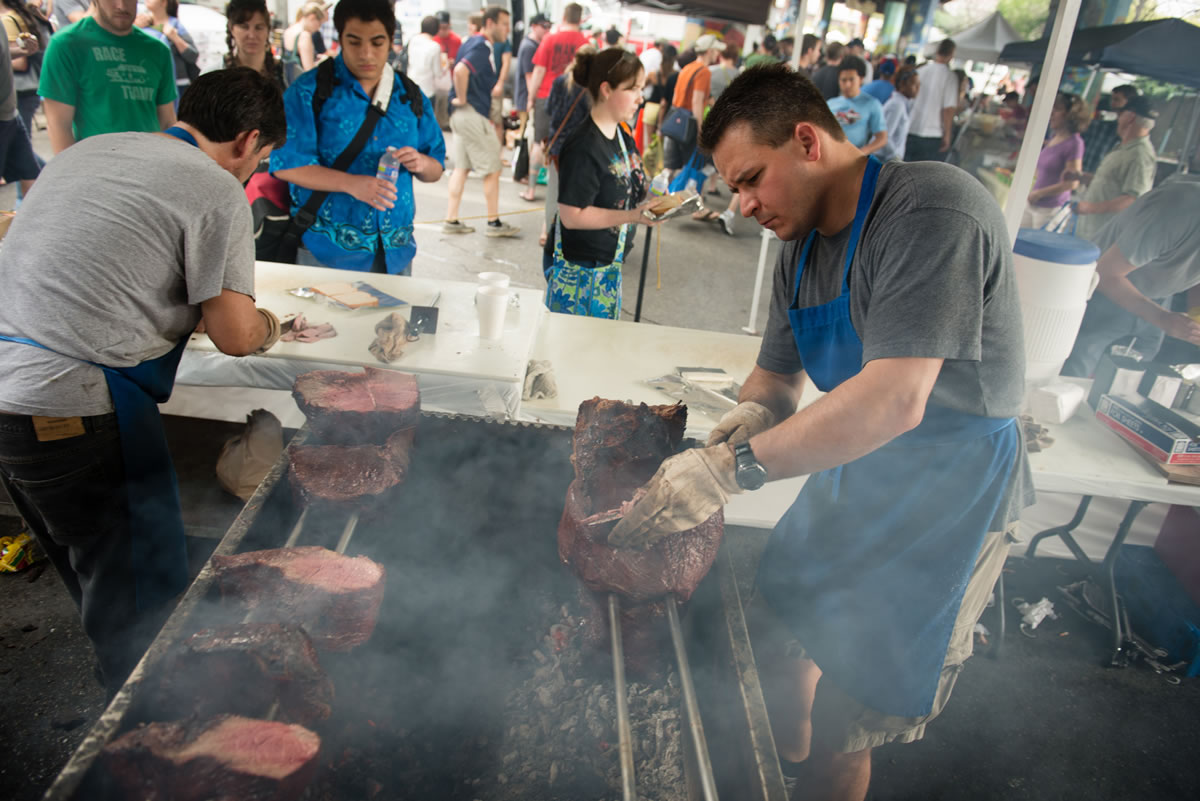You know those bumper stickers that say “Keep Austin Weird”? The slogan has been adopted by other cities around the country, but Baltimore doesn’t need a sticker. It is bone-deep weird. Exhibits A, B, C: John Waters, Frank Zappa, HonFest.
Oh, and D: Baltimore pit beef.
It’s a thing all its own. Although it’s often called barbecue, it’s cooked neither slow nor low. It’s not smoked over an indirect fire in a closed cooker. Nor does it conform to conventional notions of grilling (leaping flames, fast-cooking foods like burgers and steaks).
Baltimore pit beef is to live-fire cooking what Waters is to cinema: a bit … different. And wholly Baltimore. You can find other smoked meats, like North Carolina pulled pork, Memphis ribs and Texas brisket, coast to coast. But Baltimore pit beef (the city’s name is commonly invoked when discussing the food) is confined mostly to the city and its immediate environs.
On a recent Sunday morning, I decide to check out Charm City’s blue-collar sandwich at the venerable pit beef stand at the weekly Baltimore Farmers Market & Bazaar.



